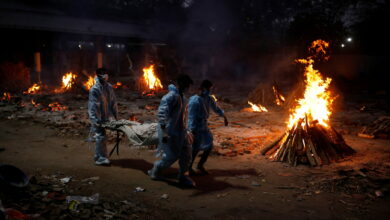covid death
-
Stories

Could Rural India be the reason behind another deadly covid wave? How can we avoid this?
Could Rural India be the reason behind another deadly covid wave? How can we avoid this? We’ve reached the stage…
Read More » -
Stories

India’s holiest river, Ganga, is filled with dead bodies: What fear does it bring for the people living near the river banks?
To explain one of the most disastrous situations connected with the coronavirus pandemic cordoning off the Indian subcontinent I would…
Read More » -
Stories

Twitter tools ease access to covid related leads
Over the last week, Twitter has seen a flood of posts of keywords including “remdesivir,” “fabiflu,” “oxygen,” “ICU,” “plasma,” and…
Read More »
